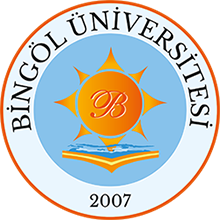MUŞ İLİNDEKİ KAZ YETİŞTİRİCİLİĞİNİN GENEL DURUMU
Özet
ÖZET Bu çalışma, Muş ilinde yapılan kaz yetiştiriciliğin mevcut durumunun ortaya konulması ve yetiştiricilikte karşılaşılan önemli sorunların tespit edilmesi amacıyla yapılmıştır. Çalışmanın materyalini Muş ili ve Merkez, Hasköy, Bulanık, Malazgirt, Varto ve Korkut ilçelerine bağlı, kaz yetiştiriciliğinin yoğun olarak yapıldığı köylerdeki 105 adet kaz üreticisinden elde edilen veriler oluşturmuştur. Araştırma bulgularına göre; Muş ilinde kaz yetiştiriciliği yapma süresinin ortalama 17 yıl olduğu ve yetiştiricilerin tamamının kaz yetiştiriciliği ile ilgili herhangi bir eğitim almadığı belirlenmiştir. İşletme başına damızlık dişi kaz sayısının ortalama 18,05 adet, damızlık erkek kaz sayısının ise 7,81 adet olarak belirlenmiştir. İncelenen kaz barınaklarının ortalama 50 m2 olduğu ve genellikle briket malzemeden yapıldığı saptanmıştır. Kazların genellikle 4 haftalık olduğunda meraya çıkarıldığı ve günde 2 kez tahıllarla beslendiği belirlenmiştir. Yetiştiricilerin büyük bir kısmının (%67) hastalıklara karşı hiçbir önlem almadığı, %30’unun vitamin, ilaç vb. kullandığı, %3’ünün ise aşı yaparak önlem aldığı belirlenmiştir. Sonuç olarak; Muş ilinde yapılan kaz yetiştiriciliğinin yapısının Türkiye geneli ile benzer olduğu ve genelde ailenin et ihtiyacını karşılamak amacıyla yapıldığı görülmüştür. Başta gelen sorunların eğitim yetersizliği, hastalıklar, düşük verim bakım-besleme konusundaki yetersizlikler, barınak sorunu ve pazarlama olduğu saptanmıştır. ABSTRACT This study was carried out in order to determine the current situation of goose breeding in Muş province and to identify the problems (disease, cost, marketing) that arise in goose Breeding. The material of the study consisted of 105 goose producers in the villages where the goose cultivation is concentrated in the districts of Muş, Central, Hasköy, Bulanık, Malazgirt, Varto and Korkut. According to the research findings; It was determined that the period of making goose breeding in the province of Muş was 17 years and that all of the breeders did not receive any training on goose breeding. The average number of female breeding goose was determined as 18.05 and the number of breeding male goose was 7.81. It was found that the examined goose shelters in average were 50 m2 and goose shelters were generally made of briquette material. It was determined that the goose were generally raised to pasture when they were 4 weeks old, and fed with cereal group (Wheat, Barley and Corn) twice a day. It was determined that most of the breeders (67%) did not take any precautions against diseases, 30% of the breeders use vitamins, medicines and so on, 3% of the breeders took precautions by taking vaccines. As a result; goose breeding in the province of Mus is carried out as a family business for the meat needs of the family and it was found to be similar to the structure of goose breeding in general in Turkey. Therefore: giving training seminars on goose breeding, provision of high quality breeding goose, the promotion of modern goose breeding with appropriate credit and subsidies and contractual practices of the state and the creation of a suitable market infrastructure are extremely important.
Koleksiyonlar
- Zootekni [29]

DSpace@BİNGÖL by Bingöl University Institutional Repository is licensed under a Creative Commons Attribution-NonCommercial-NoDerivs 4.0 Unported License..













